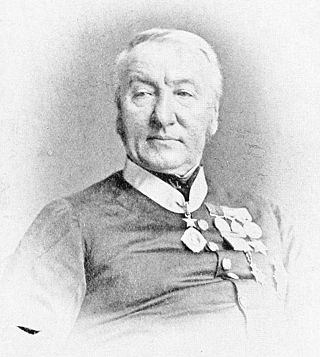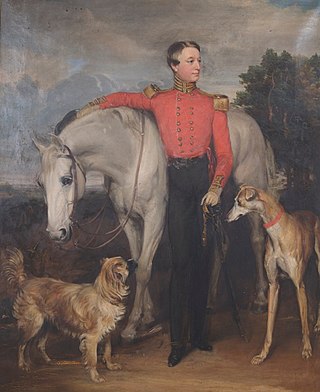
Colonel Sir Henry Yule was a Scottish Orientalist and geographer. He published many travel books, including translations of the work of Marco Polo and Mirabilia by the 14th-century Dominican Friar Jordanus. He was also the compiler of a dictionary of Anglo-Indian terms, the Hobson-Jobson, with Arthur Coke Burnell.

Field Marshal Robert Cornelis Napier, 1st Baron Napier of Magdala was a British Indian Army officer. He fought in the First Anglo-Sikh War and the Second Anglo-Sikh War before seeing action as chief engineer during the second relief of Lucknow in March 1858 during the Indian Rebellion of 1857. He also served in the Second Opium War as commander of the 2nd division of the expeditionary force which took part in the Battle of Taku Forts, the surrender of Peking's Anting Gate and the entry to Peking in 1860. He subsequently led the punitive expedition to Abyssinia in July 1867, defeating the Emperor Tewodros II of Ethiopia with minimal loss of life among his own forces and rescuing the hostages of Tewodros.

Lieutenant General Sir James Hills-Johnes, was a British Indian Army officer and a recipient of the Victoria Cross, the highest award for gallantry in the face of the enemy that can be awarded to British and Commonwealth forces.

The Bengal Presidency, officially the Presidency of Fort William in Bengal, later the Bengal Province, was the largest of all three presidencies of British India during Company rule and later a province of India. At the height of its territorial jurisdiction, it covered large parts of what is now South Asia and Southeast Asia. Bengal proper covered the ethno-linguistic region of Bengal. Calcutta, the city which grew around Fort William, was the capital of the Bengal Presidency. For many years, the governor of Bengal was concurrently the governor-general of India and Calcutta was the capital of India until 1911.

Major-General Sir James Browne, known as "Buster Browne", was a British military engineer and administrator in British India.

Cavenagh Bridge is the only suspension bridge and one of the oldest bridges in Singapore, spanning the lower reaches of the Singapore River in the Downtown Core. Opened in 1869 to commemorate Singapore's new Crown colony of the Straits Settlements status in 1867, it is the oldest bridge in Singapore that exists in its original form.

Major-General Sir Henry Marion Durand, was a British military officer in the Bengal Army and served as Lieutenant Governor of Punjab from 1870 until his death in 1871.

Lieutenant-General James Francis Tennant, was a British soldier and astronomer.

Major-General Sir Frederick Abbott, was a British Indian Army officer and engineer of the East India Company.

The Imperial Legislative Council (ILC) was the legislature of British India from 1861 to 1947. It was established under the Government of India Act 1858 by providing for the addition of six additional members to the Governor General Council for legislative purposes. Thus, the act separated the legislative and executive functions of the council and it was this body within the Governor General's Council which came to known as the Indian/Central Legislative Council. In 1861 it was renamed as Imperial Legislative Council and the strength was increased.

The East India Company Military Seminary was a British military academy at Addiscombe, Surrey, in what is now the London Borough of Croydon. It opened in 1809 and closed in 1861. Its purpose was to train young officers to serve in the East India Company's own army in India.
Lieutenant-General Sir Charles Edward Nairne was a British military officer who served in British India.

Lieutenant general Colin Mackenzie, CB was a British officer in the Madras Army who was active as a political officer in Afghanistan.
Lieutenant Colonel Sir Henry Trotter, was a British Indian Army officer in the Royal Engineers, an author, and an explorer of Central Asia.

Sir (Robert) Lambert Playfair was a British soldier, diplomat, naturalist and author.
General Sir Robert HoustounKCB was a British military officer in the service of the East India Company.

Ronald MacPherson was a military officer, architect and colonial administrator in Singapore. He is well known for the design of the St Andrew Cathedral.
The Pavilion is a house located at 5 Oxley Rise, Oxley Hill, near Orchard Road in Singapore. The Pavilion served as Government House between 1859 and 1861, after Raffles House was demolished to make way for a fort.

John Stafford Paton, (1821–1889) was an English general in the Indian Army. He served in the Sikh Wars of 1845–1846 and 1848–1849, and was severely wounded at Chillianwallah; served under Sir C. J. Napier against the Afridees and at the Kohat Pass in 1850; and in 1867 commanded the field detachment from Lahore sent to aid in suppressing the Gogaira insurrection during the Indian Mutiny.















